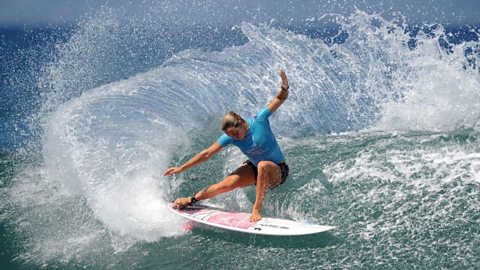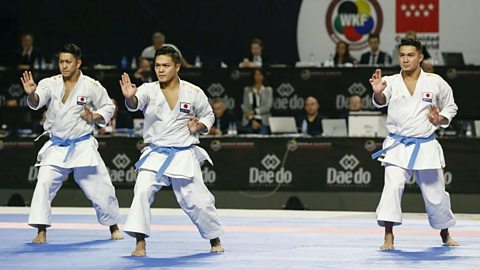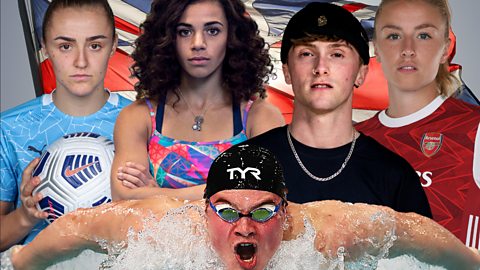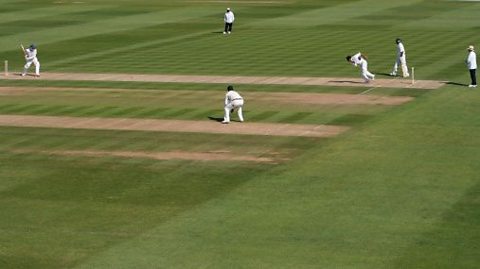There will be five (well, actually six) new sports added to the programme at the Tokyo 2020 Olympic Games.
The International Olympic Committee (IOC) considered multiple factors when deciding which sports would make the cut: the impact on gender equality, the youth appeal of the sports and the legacy of adding them to the Tokyo Games.
HereÔÇÖs our guide to the new sports and how they will look at the Olympics in Japan.
Sport Climbing
Unless youÔÇÖve been living under a rock, rather than climbing up it, youÔÇÖll know that climbing is the new brunch - everyone is doing it.
The International Federation of Sport Climbing (IFSC) website says the sport is enjoying an increase in popularity, with an estimated 25 million people across the world climbing regularly. As of 2019, they also estimated that between 1,000 and 1,500 people were trying climbing for the first time, every single day, in the United States.

In Tokyo it will be a combined format featuring three disciplines: speed climbing, bouldering and lead climbing - all of which take place on artificial climbing walls. The gold medal will be awarded to the climber with the highest cumulative score. There will be both menÔÇÖs and womenÔÇÖs events at the Olympics in Tokyo, with 20 climbers competing in each.
A variety of different skills and strengths will be needed to compete across all three disciplines - itÔÇÖs like asking a sprinter to run 100m, 1500m and then do the hurdles, kind of.
Speed climbing
This involves two climbers racing up a fixed route on a 15m wall, men and women compete on identical routes.
In the menÔÇÖs event the quickest times are around five to six seconds, while the womenÔÇÖs are usually won in around seven or eight. In an event where speed is of the essence, a false start means instant disqualification.
Bouldering
In this event climbers scale a number of fixed routes on a 4m wall within a given time, without ropes, over a safety mat. The routes are called ÔÇÿproblemsÔÇÖ and the athlete that ÔÇÿsolvesÔÇÖ the most in the lowest number of attempts wins.
In qualifications and semifinals, the climbers observe the problems for the first time during their first attempt, they are kept in an isolation room beforehand. In the finals they can preview the problem during a group observation time of two minutes per boulder. Different problems are set for men and women.
Lead climbing
This sees the competitors attempt to climb as high as possible on an overhanging 15m wall within a six minute time limit. They are secured by a rope. The athlete who climbs to the highest point wins.
Competitors can preview the route during a collective observation time of six minutes, but cannot attempt the route prior to the competition.
When a climber grabs the final hold at the top of a route with both hands, they have completed it.
Surfing
Surfing also makes its Olympic debut in 2021 on the real waves at Tsurigasaki Surfing Beach, 40 miles outside of Tokyo on JapanÔÇÖs Pacific coast. Twenty men and 20 women will compete in separate competitions.
Surfing competitions are usually divided by the size of the board, shortboards will be used at the Tokyo 2020 Games. They are approximatley six feet (1.8m) in length, compared to longboards which are around nine feet (2.7m).
The competition will use a four-man heat structure - four athletes will compete at a time. The best two of each heat continue to the next round.

Common surfing etiquette will be used:
- only one rider may ride a wave
- the surfer closest to the peak has ÔÇÿright of wayÔÇÖ
- any interference with another surfer can incur a penalty or point deductions
There will be a panel of judges to determine performance. Scores are based on difficulty of manoeuvres and how they are executed, taking into account speed, power and flow.
Riding as many waves as possible and performing loads of manoeuvres is not going to pick up the highest scores, doing a variety of dynamic moves on large waves is the way to win gold.
Like with planning routes in climbing, surfing involves plenty of mind games as athletes can throw each other off by pretending not to be interested in a wave or by paddling but not catching it.
Skateboarding
The Olympics are getting really down with the kids with this one. Skateboarding is rolling into Tokyo 2020 with two events, Park and Street.

In the Street event, the competitors perform individually and show off their skills or ÔÇÿtricksÔÇÖ on stairs, handrails, curbs, benches, walls and slopes.
They are scored based on the level of difficulty, height, speed, originality, execution and move composition and include the following:
Slide: A slide is a trick where the skateboarder slides sideways either on the deck (wooden board) or on the wheels.
Grind: This involves the skateboarder sliding on the trucks of their skateboard (the part which connect the wheels and bearings to the deck of the skateboard).
Ollie: An ollie is a trick where the rider and board leap into the air without the use of the rider's hands.
Regular stance: This is the side-on position taken by skateboarders with their left leg facing the direction they are moving.
Goofy stance: When a skateboarder rides with their right leg facing the direction they are moving. When they swap the position of the front leg in a competition they go from main stance to switch stance. A trick performed in switch stance would usually increase the degree of difficulty.
The Park event will take place on a hollowed-out course featuring a series of curved surfaces that rise steeply. Competitors climb the curves at speed and perform mid-air tricks. They are scored on the difficulty, originality and execution of their tricks.
Karate
Karate in the Olympics will consist of kata (forms) and kumite (sparring). A Karate practitioner is called a karateka.
The Tokyo 2020 Games will see 80 athletes competing in the two styles. There will be a kata menÔÇÖs and womenÔÇÖs event, and three weight classes each for menÔÇÖs and womenÔÇÖs kumite events.

Kata
This is a demonstration of a series of offensive and defensive movements made to be practiced alone targeting a virtual opponent.
Competitors at the 2020 Games choose which kata they want to demonstrate. They are scored on strength, speed, rhythm, balance, power of strikes and kicks, solidity, clarity, force of movements and thats not even everything.
Kumite
Also known as sparring, is when two karateka face each other. They compete on a matted area measuring 8m x 8m. Karateka wear a traditional suit known as a karate gi. It is tied with a belt or sash called an obi.
In kumite, competitors are allowed to use three techniques: striking, kicking and punching.
They have to try and land strikes on the target area of their opponentÔÇÖs body to gain points. They get more points for attacks with good form, power and control.
Baseball/Softball
Baseball and softball are back on the Olympic programme after being absent since the Beijing 2008 Games.
Their reinstatement follows an invitation by the IOC for the host country to propose the temporary inclusion of additional events. They suggested womenÔÇÖs softball and menÔÇÖs baseball considering their popularity in Japan.

Baseball
There are two teams of nine players who aim to score the most ÔÇÿrunsÔÇÖ by hitting a ball and running around a sequence of bases to reach the ÔÇÿhome plateÔÇÖ. The teams take it in turns to bat and field, these are called ÔÇÿinningsÔÇÖ. They switch when the opposing team gets three players out. The team with the most runs after nine innings of alternate batting and fielding wins.
Softball
Thought to have been introduced as an indoor version of baseball for the off-season, softball was introduced to the Olympics as a womenÔÇÖs sport in Atlanta 1996, and then removed with baseball in 2008.
It is very similar to baseball but with a shorter distance between pitcher and batter, the ball is larger and less dense, and the bat is shorter.
The ball must be thrown underhand when pitching, this means the ball is released while the wrist is passing the side of the body.
With the introduction of these new sports, will young Olympians be running, rolling and riding circles around their senior counterparts?
And if youÔÇÖre thinking, "I fancy being in the Olympics,ÔÇØ but youÔÇÖve missed the boat on these sports, never fear - the Paris 2024 Games have confirmed that breakdancing will make its Olympic debut in the French capital, so you still have time to perfect your popping and locking.
Class of Tokyo 2020: The race to be selected for Team GB
Find out what it takes to become an Olympian as Bitesize goes behind the scenes with five athletes hoping to head to Japan

Tokyo 2020: Learn basic Japanese phrases for the Olympics and Paralympics
Teacher Sayaka can help you support Team GB and ParalympicsGB at the Games with some key phrases

Five sports you didnÔÇÖt know were at the Olympics
We take a look at some of the events in history that used to be a part of the Olympics
